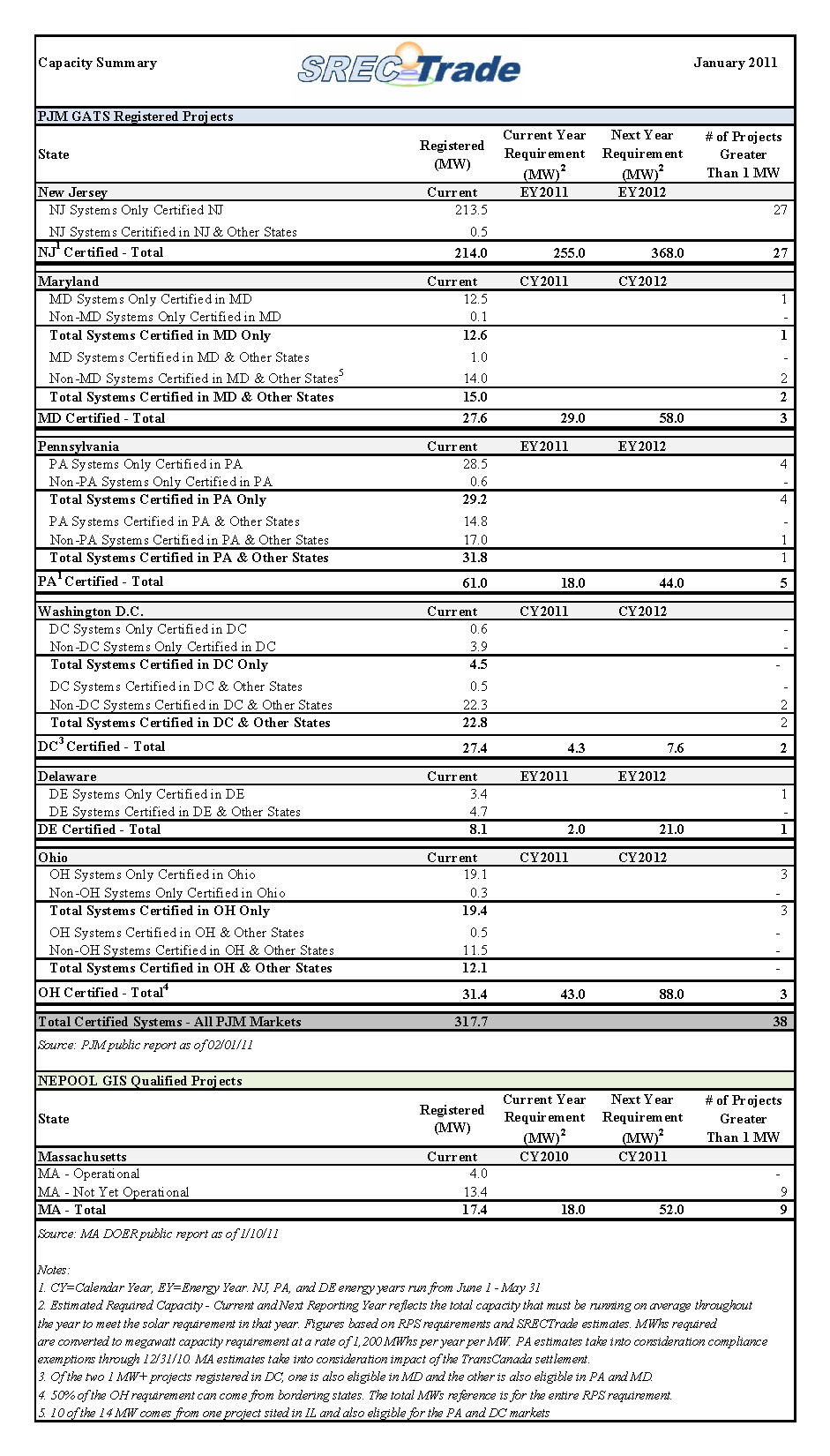As we have written previously, the DOER’s Massachusetts Solar Carve-out has established an SREC market that could become the model that many states move towards in order to promote solar in the U.S. For an industry accustomed to the promotion of the feed-in tariff model, the Massachusetts market represents a hybrid between the market-based approach of SREC programs popular on the East Coast and the fixed-subsidy approach of the feed-in tariff model popular in Europe, though nearly non-existent in the U.S.
Through the use of a ceiling price set by a $600 SACP and a floor price set by a $300 last chance auction mechanism, the DOER is able to keep SREC prices within a manageable range. One of the significant caveats of the rules by which the DOER implements the solar carve-out is that it can, at its discretion (and with proof of justification) reduce the SACP by up to 10% in any given year. That announcement needs to be made by January 31st of that year and the DOER did just that yesterday on January 31st, 2011
According to the DOER, the ACP will drop by $50 from $600 to $550 for the 2011 SREC year. This means that any SRECs generated beginning in January and subsequently created beginning in July will have a ceiling of $550 instead of $600. The announcement and justification are found here:
COMMONWEALTH OF MASSACHUSETTS
EXECUTIVE OFFICE OF ENERGY & ECONOMIC AFFAIRS
DEPARTMENT OF ENERGY RESOURCES
RENEWABLE ENERGY PORTFOLIO STANDARD (RPS) – CLASS I
SOLAR CARVE-OUT
Reduction of the Alternative Compliance Payment (ACP) Rate
January 31, 2011
DOER is authorized under 225 CMR 14.08(3)(b)2 to reduce the Alternative Compliance Payment (ACP) rate pertaining to the Solar Carve-Out portion of the RPS Class I obligation. Any such rate reduction may be no more than 10% in any one Compliance Year, must be announced by January 31st of that year, and must be accompanied by an explanation.
DOER hereby reduces the Solar Carve-Out ACP Rate to $550 per MWh, down by 8.3% from the program’s 2010 initial rate of $600/MWh. The new $550/MWh rate is effective for Compliance Year 2011 and thereafter, unless and until DOER makes a further reduction by January 31st of any subsequent year.
DOER has reached this decision after careful consideration and deliberation on the market conditions facing solar development in Massachusetts since 2009, when the original $600 ACP level was set. During this time, solar developers have enjoyed declining PV module costs and have used conservative financial assumptions.
Globally, over the past two years, PV module prices have experienced significant price drops, and some European solar feed-in tariff rates have been reduced. Locally, installed costs for projects qualified for the Solar Carve-Out have trended downward between 5% and 10% since the beginning of the program. Elsewhere, Lawrence Berkeley Laboratory reports installed solar PV prices dropping in 2010 about $1/W in the major PV markets in California and New Jersey (http://eetd.lbl.gov/ea/ems/reports/lbnl-4121e.pdf). DOER remains committed to the growth of our solar market and to achieving this growth at lowest cost to Massachusetts electric customers.
The discretion of the DOER in making this change has been clear from the rules set at the outset of the program. It is surprising that this adjustment would happen so early in the adoption of the program, particularly given the shortfall of SRECs in Massachusetts in the first year of the program. However, the 2010 shortage is not necessarily a reflection of the feasibility of financing solar in Massachusetts with the solar carve-out in place. It likely has more to do with the amount of time it takes to implement the program logistically, the time it takes to educate stakeholders, and the time it takes to go to the retail and institutional markets with the new, SREC-driven economics. In the states that have come before, the full adoption of SREC-based economics has taken 3-4 years. Ohio is a full two-years into the program and the industry is still catching up (though Ohio’s problem has more to do with a flawed design). Massachusetts may see adoption quicker given a growing industry consciousness around SRECs and a program that can *almost* be simply described as you install solar, you get back $300-$600 per megawatt-hour that your system produces in addition to your electricity savings/sales for 10-years.
That *almost* is where we are today as the implications of a reduced SACP brings some of the caveats of the program to the forefront. That range of pricing has now been squeezed to $300-$550, and it also means that anyone following the SREC market should start to wonder if $550 will be $500 in 2012 and $450 in 2013 and at some point this just turns into a fixed feed-in tariff at $300. One thing is clear: the DOER has created a program that gives it the levers necessary to make it flexible enough to keep pace with solar industry trends and that the DOER will not hesitate to pull those levers.
As we mentioned, the ability of the DOER to adjust the ceiling price was apparent in the rules, but there is no mention that anything can be done to change the $300 fixed-price in the last chance auction. We believe that this was a cornerstone to the program. And the only apparent variable with the floor price is the Opt-In term which sets the number of years a facility may be eligible for the last-chance auction – initially set at 10 years.
Finally, as the largest aggregation and market in Massachusetts, SRECTrade has been partnering with buyers to extend various options to our network of installers. These options now include upfront payments and 5-year+ fixed-price contracts for facilities of all sizes. Our goal is to ensure that our customers have every possible option available when making a decision on how best to go solar with the Massachusetts solar carve-out. Installers can learn about joining our network here: SRECTrade Installer Network.
Subscribe

